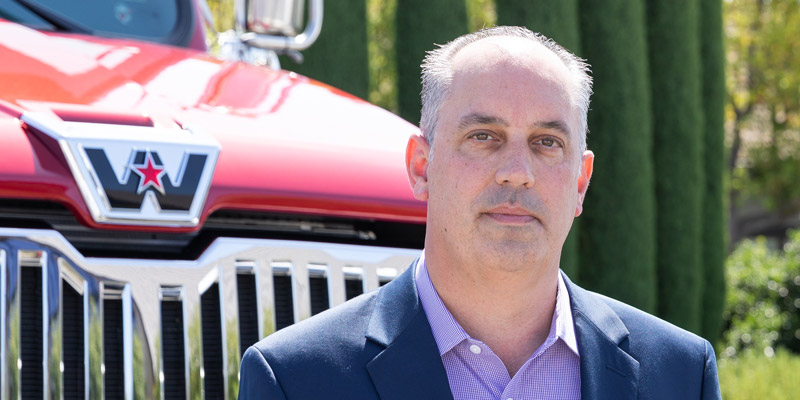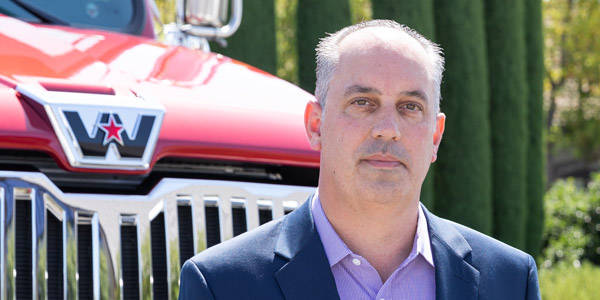
Just because a job is hard doesn’t mean that the solution has to be. The Western Star team tackles it from all angles.
The truck
David Carson stands in front of a brilliant red Western Star 4700 as sunlight cuts through the clouds, bringing the 4700’s badass paint job to life as it burns off the cool California morning. David is once again in front of the trucking press—just about a year and a half after taking over the reins as president of Western Star—and he’s ready to get down to business.
“We’re outside—no PowerPoints, no video screens; normally, I don’t use a microphone because I have this booming, deep baritone voice,” he says. David as approachable as he is charismatic. Sit next to him at dinner and you’ll laugh more than you eat, but when it’s time for business, he cuts to the chase. His personality is the perfect match for Western Star. The in-your-face brand has doubled down on its “no job is too tough” mantra, and the Western Star enhanced 4700 is a perfect example of that.
The enhanced 4700 includes several upfit-friendly improvements, including updates to the electrical system—such as the addition of a third Power Distribution Module—and improved interface connections on the back floor of the cab, as well as four new options for trailer connections. Fleets can opt for a Cummins X12 engine, which delivers up to 1700 lb.-ft. of torque and 500 HP and a weight savings of up to 600 lbs. compared to other medium-bore engines in the 10- to 13-liter category, according to Cummins. The engine also comes with front- and rear-engine PTO offerings, which are critical to provide power in demanding applications.
“Vocational customers have extremely unique demands, requirements and expectations, and that means that we have to approach the product a little bit differently,” Carson says. “Oftentimes, they own the truck significantly longer than an on-highway customer, and they’re all different sizes of businesses—everything from a one truck buyer to potentially 50 or a hundred. Most of our time is spent on our smaller customers who are buying one to five trucks at a time.”
While vocational truck productivity is often measured in engine hours, not miles, muscle-flexing Western Star trucks are getting smarter. The demand for the latest truck technology—in both efficiency, productivity and safety system arenas—is being driven by the customer.
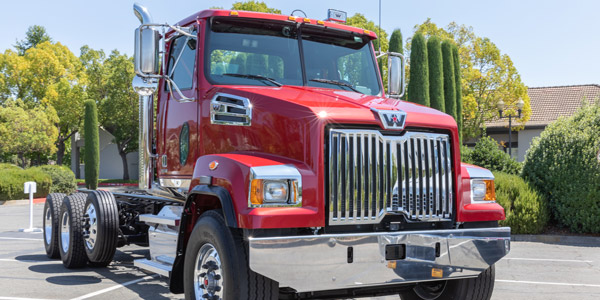
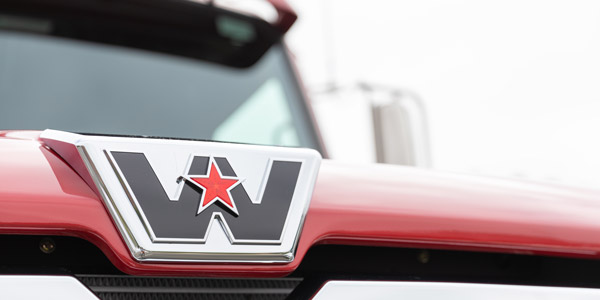
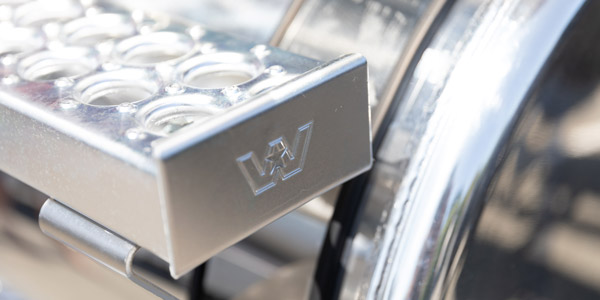
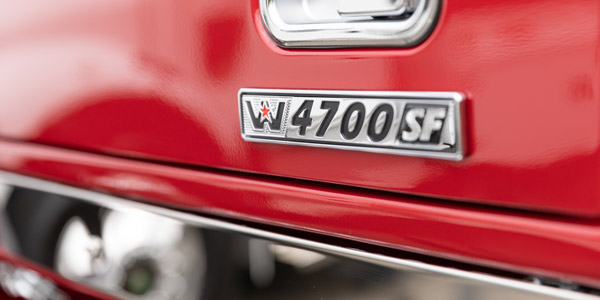
“Vocational customers used to not be interested in paying for those features, or had the belief that because most of their time might be off road, that they didn’t need them,” David says, “but we’re seeing consolidation in a number of different segments where you’ve got bigger businesses that are buying traditionally smaller regional companies within the vocational segment. They’re focused on risk management and safety features and want to ensure that they have the best technology available on those vocational trucks. The 4700 has those features and we continue to work to develop those in our product set.”
In the way of advanced collision mitigation systems, WABCO’s OnGuard is available on the enhanced 4700. It uses a bumper-mounted radar unit to track vehicles and objects in the truck’s path, and then automatically applies the brake if the driver doesn’t slow the truck in time. Fleets can also opt for the Bendix lane departure camera that tracks the truck’s lane position and provides audible warnings to the driver.
While Western Star marches in step with Daimler Trucks North America’s (DTNA) renewed focus on its customers, the way it serves its vocational market is as tailored as its trucks.
“We have a great tradition and heritage in that Western Star has always been focused on our customers’ unique demands,” David says. “We grew up and cut our teeth in Western Canada, in extremely demanding environments, but we take that experience and leverage it into other segments.
“The challenge for us obviously is to scale those,” he continues. “To run as a corporation, we can’t customize everything, but we do need to pay attention to those features, advantages and benefits of the product that will meet the needs of the person who’s going to buy two trucks or 20 trucks or 200 trucks.”
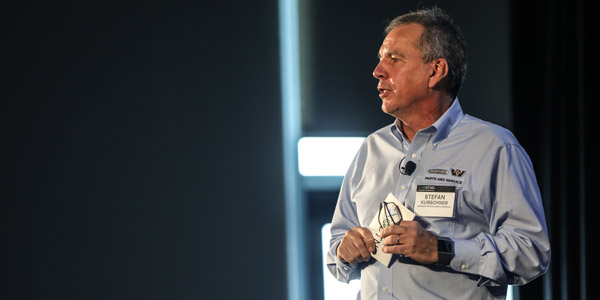
The service
Stefan Kurschner sits in a tall director’s chair next to the 4700. He’s relaxed, legs crossed, and nods along with David when he lands on a major point in his presentation. Soon, David turns the pavement over to him.
“David invited me here to speak a little bit about the aftermarket because this is not a one-size-fits-all approach for the vocational segment,” Stefan says. He’s calm, collected; exactly the type of person you’d want dealing with service issues as the DTNA senior vice president of aftermarket. When you talk with him, he listens intently and then responds insightfully.
“When you talk with vocational customers, it becomes pretty obvious that what works for the highway does not necessarily work for vocational,” he continues. “Product application, the environment—it’s all completely different.
“Think about a mining or an oil field truck—they’re in an environment where we can’t tell them: ‘If you bring it to the next service location, we get it done in 24 hours.’ That is not going to work for a vocational customer. We need to go to where the customer is and provide that service at that location.”
“If we look at the truck market for
David Carson,
NAFTA in total, the vocational segment of that market is about 30%. If we look at Western Star specifically, vocational applications make up about 70% of our builds.”
Western Star President
DTNA has been aggressively expanding its parts distribution centers (PDC) network across North America. The latest one in the U.S. is set to open soon in Arizona’s Maricopa County, which encompasses the greater Phoenix area. When combined with the other parts distribution centers, it supports DTNA’s ability to provide next-day delivery to more than 90% of its U.S. dealer order volume. Stefan hinted at a yet another PDC, this time in Canada, with more details to come later this year.
“Within our aftermarket group, we have a specific group who thinks about the sourcing and logistics of vocational-specific parts: how to get them increased mobile service capabilities to get to those trucks, and create a tailor-made concept for the different vocational segments,” he said. “Our Western Star customers, as David said, are sometimes spread across the country and can be difficult to get to, but we’ll find a way to service them.”
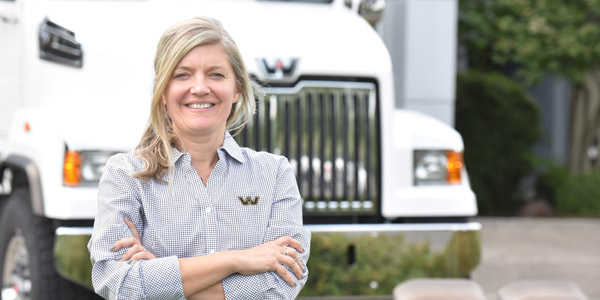
The solutions
Samantha Parlier can talk the traditional vocational market talk, but as Western Star’s vice president of marketing and product strategy, she knows that the future of the Western Star brand crackles with the digital energy and outside-the-box bravado necessary to design the hard-working solutions of the future.
“The best electrical advancement we’ve made on the enhanced 4700 is the body builder harness and cable,” she says as she pulls open the passenger side door and invites you to climb inside. “It’s a wiring connector that is labeled, this one has blunt-cut wires or you can order it with connectors. They’re all labeled for all the critical functions body builders need to access around the truck—remote throttle, remote stop, things like that.”
She continues her enhanced 4700 walk-around, noting the Detroit DT12 automated manual transmission option that offers a creep mode, hill start aid and a precise pneumatic shift and clutch control, frame rail features that make fleets and body builders happy: “This 4700 is set up for a cement mixer with a lift-axle, so it has a transition plate. What used to happen 10 or 15 years ago was that they didn’t have a transition plate and the frame rails would crack right behind the cab because of all the force that mixer was putting on the cross members right behind the cab.”
She also echoes David’s comments on increasing safety system demand within vocational markets as she taps the WABCO collision mitigation system radar mounted in the 4700’s bumper.
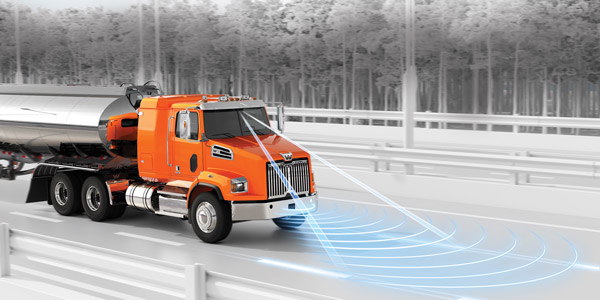
Samantha’s view of truck technology in the vocational market goes beyond what’s readily available today. She steps inside a conference room where scale models of futuristic vocational trucks are on display. They’re sleek, super cool concept haulers built specifically to tackle the tough tasks commonly reserved for Western Stars.
The designs were born from the creative minds at The ArtCenter College of Design in Pasadena, Calif., via a challenge Western Star called “The Vocational Truck of the Future.”
“The year we used was 2030,” Parlier says. “We told the students to think about what the vocational customer is going to experience and what their needs are going to be and figure out what problems you need to solve. We wanted their ideas and their concepts to help shape the way we think about the market.
“Right off the bat, they approached everything differently than what we traditionally do at Western Star.
“The first thing almost every single one of them did was jump on social media and start asking questions,” she says. “Almost immediately, they had a huge population of vocational customers that they targeted with direct questions. And as we walk through each model, I’ll hit on some of the concepts that they came to through that process.”
The applications included a dump truck, crane truck, mixer truck and a snow sublimator.
“And for those of you that don’t know what sublimation is—that included myself—it’s a twist on the snowplow,” Samantha explains. “As it plows the snow, it inhales the snow into the sublimator, which turns it into steam and water vapor. So instead of piling snow up on the side of the road, they’re vaporizing it.
“One of the students’ big desires was to remove the use of chemicals on the road. So if you sublimate the snow, you no longer have to use the magnesium chloride amazing fluoride, which is incredibly difficult on chassis and on the environment around it.”
Getting the tough job done right was clearly in focus, but the students leaned heavily on the driver’s experience, safety and the trucks’ impact on the environment.
“The student that designed the dump truck asked drivers what they liked, what they didn’t like, what brand of truck was their favorite and why,” she says. “And they were able to incorporate that feedback into the design.”
The crane truck design was a definite standout, as its silhouette differed from what you expect to see today.
“It actually looks maybe a little bit more of a throwback model, right?” Samantha says as she notes that in this design, the engine slides out of the truck body for service.
But that wasn’t the only cool new concept.
“He also used the material that becomes translucent when you apply electricity to it so that they can then see around it.”
Is it practical? Time will tell. Is it an awesome idea? Definitely.
But it was the concrete mixer truck design that turned the concept dial up to 11.
“It’s by far the most significant departure from what you see today in the industry,” she says pointing to the flipped-drum design. The concrete chute comes out of the front of the truck so that the operator never has to leave the cab.
“The two students who co-developed this concept visited actual customers and talked with them. They found out that 50% of the injuries of concrete mixers are slips and falls, both getting in and out on the steps, and also climbing up the back to put water in the chute. As you think through the life of a concrete mixer driver—what a change that would be. They wouldn’t have to get in and out of the truck if everything was automated and controlled from the cab.”
Highly automated advanced technology connected to the fleet manager to track productivity isn’t just the stuff of on-highway dreams. Just because a job is tough doesn’t mean the solution has to be dumbed down. There’s plenty of room for fresh ideas and new perspectives within the sweat-breaking, muscle-straining Western Star world. All it takes is an open mind, the willingness to start the conversation by saying, “What can we do better?” and then you figure it out together.

